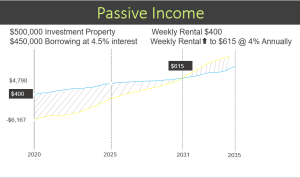The Pros and Cons of Buying vs Renting a Home is a topic that resonates with many individuals and families as they navigate their housing options. Whether you’re a first-time buyer contemplating a mortgage or a renter weighing the benefits of flexibility, understanding the advantages and disadvantages of each choice can make all the difference in your decision-making process.
This exploration dives into the financial implications, lifestyle considerations, and long-term impacts of both buying and renting a home. With the ever-evolving real estate market, it’s crucial to assess personal circumstances and future goals when choosing the best path for you.
In today’s fast-paced world, the necessity for effective communication has never been more pronounced. Whether in a personal, academic, or professional context, the ability to articulate thoughts and ideas clearly can significantly influence outcomes. In this article, we’ll explore various aspects of communication, including its importance, the different types of communication, and some practical tips for improving your skills. ### The Importance of CommunicationCommunication is a fundamental aspect of human interaction.
It allows us to express our thoughts, share ideas, and build relationships. In a professional setting, effective communication is essential for collaboration and teamwork. Miscommunication can lead to misunderstandings, reduced productivity, and even conflict. In contrast, clear communication fosters a positive environment, encourages open dialogue, and enhances overall effectiveness.In personal relationships, communication helps to build trust and understanding. It enables individuals to express their feelings, resolve conflicts, and strengthen bonds.
Additionally, in educational settings, effective communication is vital for learning and academic success. Educators must convey information clearly, while students must articulate their thoughts and questions.### Types of CommunicationCommunication can be broadly categorized into several types: verbal, non-verbal, written, and visual. Each type plays a unique role in how we convey information.#### 1. Verbal CommunicationVerbal communication involves the use of spoken or written words to convey a message.
It can take place in various forms, including face-to-face conversations, phone calls, and video conferences. The tone of voice, clarity of speech, and choice of words are all crucial elements of verbal communication. Effective verbal communication is not just about what you say but also how you say it. It’s important to be mindful of your audience and tailor your message accordingly.
Using simple language, being concise, and avoiding jargon can help ensure your message is understood.#### 2. Non-Verbal CommunicationNon-verbal communication includes body language, facial expressions, gestures, and eye contact. These non-verbal cues can significantly influence how a message is perceived. For example, maintaining eye contact can convey confidence and sincerity, while crossed arms may signal defensiveness or disinterest.Being aware of your own non-verbal signals and those of others can enhance your communication.
It’s essential to align your verbal and non-verbal messages to avoid confusion. For instance, if you say you’re happy but your facial expression shows sadness, the inconsistency may lead to misunderstandings.#### 3. Written CommunicationWritten communication encompasses emails, reports, memos, and other written documents. It allows for the precise expression of ideas and is often used in professional settings for documentation purposes.
The advantage of written communication is that it provides a tangible record that can be referred to later.To improve your written communication skills, focus on clarity and organization. Use headings, bullet points, and short paragraphs to make your writing more accessible. Additionally, proofread your work to eliminate grammatical errors and typos, which can undermine your credibility.#### 4. Visual CommunicationVisual communication involves the use of images, charts, graphs, and other visual aids to convey information.
This type of communication can enhance understanding and retention, especially for complex information. Visuals can help to simplify data and illustrate key points.For example, infographics can present statistics in a visually appealing manner, making it easier for the audience to grasp the information quickly. When using visual elements, ensure they are relevant and support your message rather than distract from it.### Tips for Improving Communication SkillsImproving your communication skills is an ongoing process that requires practice and self-reflection.
Here are some practical tips to help you enhance your abilities:
1. Listen Actively
Effective communication is a two-way process. Paying attention to what others say demonstrates respect and encourages open dialogue. Practice active listening by nodding, summarizing, and asking clarifying questions.
2. Be Clear and Concise
Avoid unnecessary jargon and complicated language. Aim to be as clear as possible, providing the necessary information without overwhelming your audience.
3. Know Your Audience
Tailor your message to suit the needs and preferences of your audience. Consider their background, interests, and level of understanding when crafting your communication.
4. Practice Empathy
Try to understand the perspective of others. Empathy fosters better relationships and encourages more meaningful interactions.
5. Seek Feedback
Don’t hesitate to ask for feedback on your communication style. Constructive criticism can provide valuable insights into areas for improvement.
6. Utilize Technology
Leverage communication tools and platforms to enhance your outreach. Video conferencing, collaboration tools, and instant messaging can facilitate better communication in today’s remote working environment.
7. Engage in Public Speaking
Taking opportunities to speak in front of groups can significantly boost your confidence and communication skills. Join clubs, such as Toastmasters, or participate in workshops to hone your public speaking abilities.
8. Reflect on Past Interactions
After important conversations or presentations, take time to reflect on what went well and what could be improved. This practice can help you identify patterns and make necessary adjustments in the future.### The Role of Technology in CommunicationIn recent years, technology has transformed the way we communicate. The rise of social media, instant messaging, and video conferencing has made it easier to connect with others, regardless of distance.
However, while technology offers numerous benefits, it also presents challenges.For instance, digital communication can sometimes lack the personal touch of face-to-face interactions. Misinterpretations can arise from the absence of non-verbal cues, such as tone of voice or body language. Additionally, the overload of information in today’s digital age can lead to distractions and reduced attention spans.To navigate these challenges, it’s essential to use technology mindfully.
Choose the appropriate communication medium for your message. For sensitive topics, a phone call or in-person conversation may be more effective than an email or text message. ### ConclusionEffective communication is a vital skill that can enhance all aspects of life. By understanding the different types of communication and actively working to improve your abilities, you can foster better relationships and achieve greater success in both personal and professional settings.
Remember to be clear, concise, and empathetic in your interactions, and don’t shy away from seeking feedback and reflection to continually refine your skills. In a world where communication is key, investing time in developing these skills is undoubtedly worthwhile.
FAQ Summary: The Pros And Cons Of Buying Vs Renting A Home
What are the main financial benefits of buying a home?
Buying a home can build equity over time, often leading to potential appreciation in property value, tax benefits, and fixed monthly payments compared to potentially rising rent.
Are there any tax advantages to renting?
While renters do not receive the same tax benefits as homeowners, some regions offer tax credits or deductions for renters, depending on local laws.
How does maintenance responsibility differ between renting and buying?
Homeowners are responsible for all maintenance and repairs, while renters typically have their landlords manage property maintenance, providing more convenience but less control.
Can renting provide more financial flexibility than buying?
Yes, renting generally requires less upfront investment and allows for more flexibility to relocate or change living situations without the burden of selling a property.
What are the risks associated with buying a home?

Risks of buying include market volatility, potential depreciation of property values, and unexpected maintenance costs that can strain finances.






